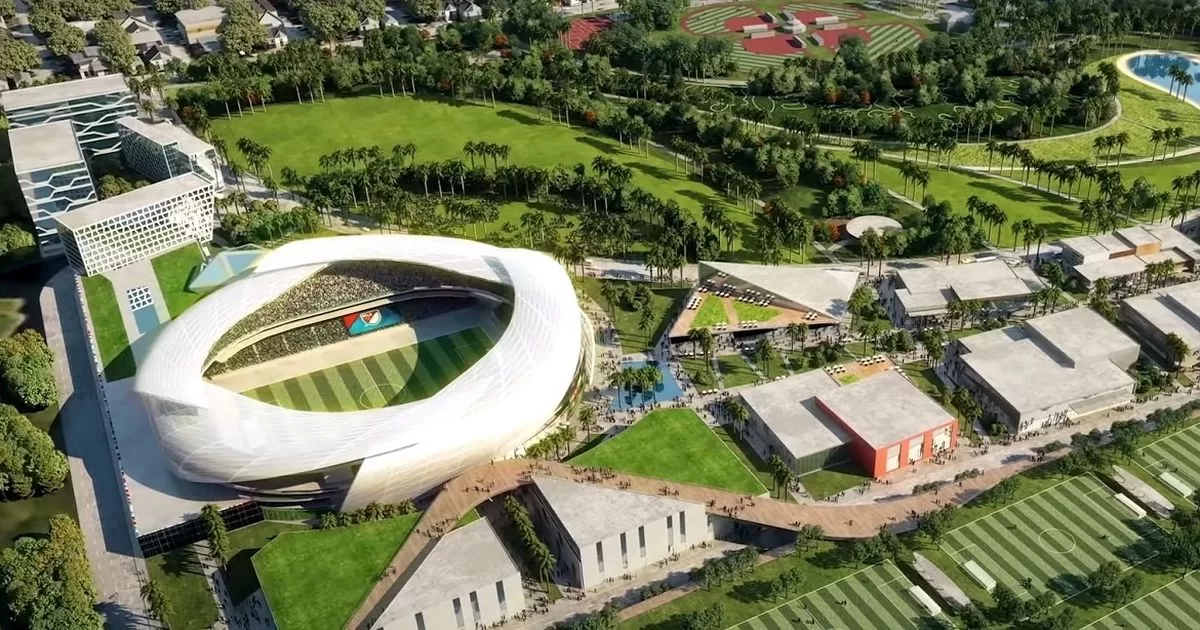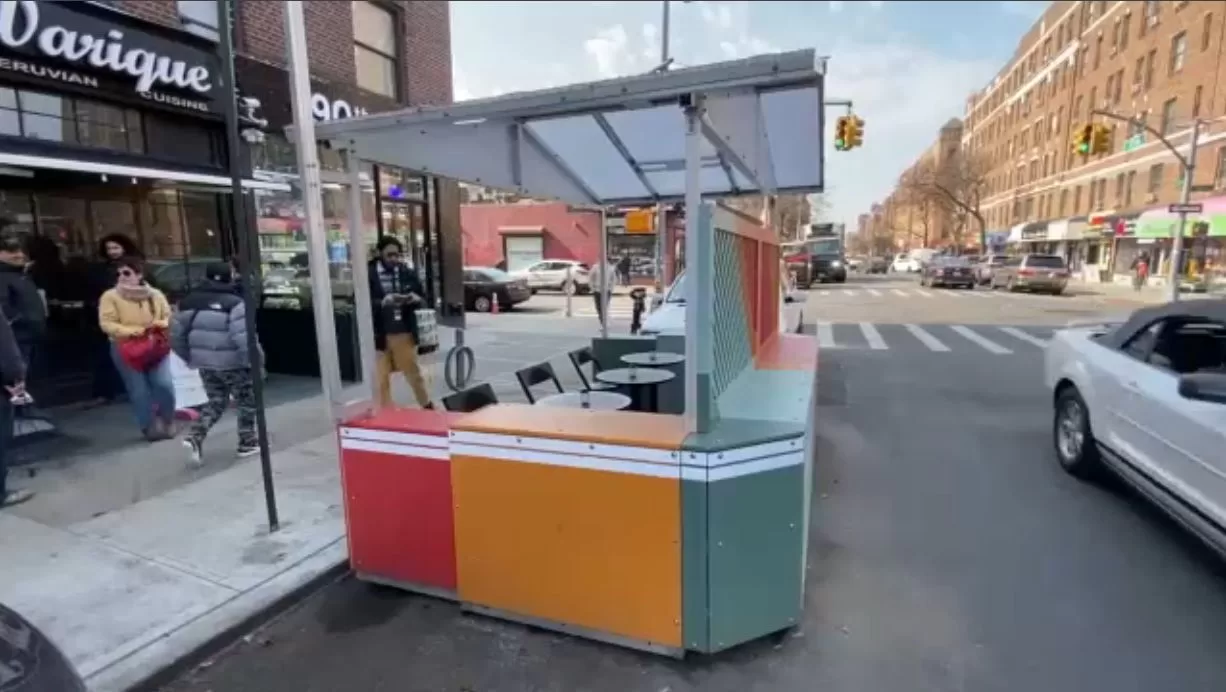On one side, Miami Freedom Park will soon become a recreational destination that all Miamians can enjoy. There you will find 58 acres of public parks and green spaces, a technology center, restaurants and shops, soccer fields for the community, and the most attractive: a stadium for 25,000 spectators for the Inter Miami team, with its biggest stars of the moment, yes. Lionel Messi and Luis Suárez are still part of the team when the works are completed.
At the time, the creators of the project assured that the construction work would not require public funds. However, a proposal approved by the Miami-Dade Commission to request an allocation of five million dollars to Tallahassee, through an ongoing bill, set off public alarm bells.
The proposal by County Commissioner Kevin Marino Cabrera, representative of Miami-Dade District 6, where the work is being carried out, seeks state financial resources to build a park and decontaminate at least part of the land where the monumental complex is built, a few steps from Miami International Airport.
Clarification on funds
The land where the Miami Freedom Park is being built would be contaminated with arsenic and lead, according to the investigation of an environmental consulting firm, which concluded that the toxicity levels are “dangerous” and that the contamination was “very close to the surface.”
The County Commission approved a resolution at its December 12 meeting to ask the state of Florida to grant the aforementioned appropriation to carry out decontamination, drainage and other work.
Many remember that in the initial contract—as warned by then-municipal commissioner Ken Russell—the Beckham Mas consortium, made up of international soccer star and English businessman David Beckham and businessmen Jorge and José Mas, announced that it would bear the cleaning costsbut then discovered that a complete cleanup of the site would cost around $50 million.
Marino Cabrera explained to DIARIO LAS AMERICAS that this budget item is necessary for the part of the project that includes the construction of the “largest park we will have in the county” and not for the stadium. The request for funds was presented by state senator Bryan Ávila.
“That bill is to help the creation of the public park and decontamination, and we will see at the end of the legislative session what the result will be. But what I can tell you is that it will be the largest park in our county, a public park, with immense green areas,” he explained.
The county legislator specified that the Miami Freedom Park will contribute more than $40 million in annual tax revenue to the City of Miami, Miami-Dade County, the state of Florida and public schools.
He explained, based on an official document, that “It will be 42.7 million dollars annually”. Of that figure, he said, “5.5 million are for the City of Miami, 10.83 million for the County, 22.65 million in sales tax for the state of Florida and 3.27 million for the Miami-Dade School Board.”
Other objections
Tomás Regalado, former mayor of Miami, commented that it is important for the city to have a football stadium like the one being built at the moment, but – he criticized – “the voters were asked to approve that project and in the end the decision was hidden from them. magnitude of the commercial complex that accompanies the stadium.”
In a referendum held in 2018, Miami voters authorized the City to negotiate and approve a leasing plan for the 131-acre property where the old Melreese Country Club operated, to convert it into Miami Freedom Park, which will include Inter Miami’s Major League Soccer stadium.
In addition to the sports venue, the plans include several mixed-use buildings for offices and commercial premises, and also a hotel, businesses that can have high profitability.
Regalado also questioned that the owners of the project “have been given control of a land for 99 years, which was considered part of the parks of the City of Miami, which by law must have a certain amount of green areas to parks and if not, it is in violation of federal and state law.”
“This will be for almost a century, something that is almost permanent, and gives the possibility to developers to sub-rent part of the plotif they are not in a position to operate so many commercial premises,” Regalado noted.
Likewise, the former mayor noted that “until now no one has responded to the neighbors’ complaints about the traffic that the area will have once the stadium is built, because the traffic studies have been carried out by people hired by the same builders and the “Governments have the obligation to hire independent companies” to obtain other recommendations.
Regarding this aspect, Commissioner Marino Cabrera assured that “as a County, We will ensure that all agreements are strictly complied with. and (the) necessary measures will be implemented to ensure the safety and comfort of our residents.”
He noted that the project has a “team of engineers” specialized in vehicular traffic issues, who “is working with all departments of the County and the City of Miami to ensure that there are no problems with the entry and exit of vehicles in the airport”.
The work
Construction on the project began in August. DIARIO LAS AMERICAS He was in the area and was able to verify the presence of heavy equipment and machinery at the scene.
In fact, a steep space, captured by our cameras, could suggest that this would be the place where the playing field would be established, once grass is planted in the future stadium.
Inter Miami reported that the work could be ready sometime during 2025which coincides with the last year of the contract of its star Lionel Messi.
Miami Freedom Park will only have 25,000 seats. This represents a slight increase of 4,000 fans compared to the current Drive Pink Stadium in Fort Lauderdale, where the Miami team plays.
To consider
Pros:
The stadium will be an important addition to Miami’s sporting scene and will provide a permanent home for Inter Miami.
The setting will also include a 58-acre public park and entertainment district, which could attract more tourists and visitors to the city.
The new work would also have a positive economic impact on the city, with a hotel and commercial and business spaces, which would generate jobs and increases in tax revenue.
Contras:
The stadium is located near Miami International Airport, which could cause traffic problems in the area.
There are residents of adjacent areas who oppose the project, arguing that it could have a negative impact on the environment and quality of life.
The project has also faced questions about municipal profits, as well as legal and financial challenges, which have delayed its construction.
(email protected)
@danielcastrope






